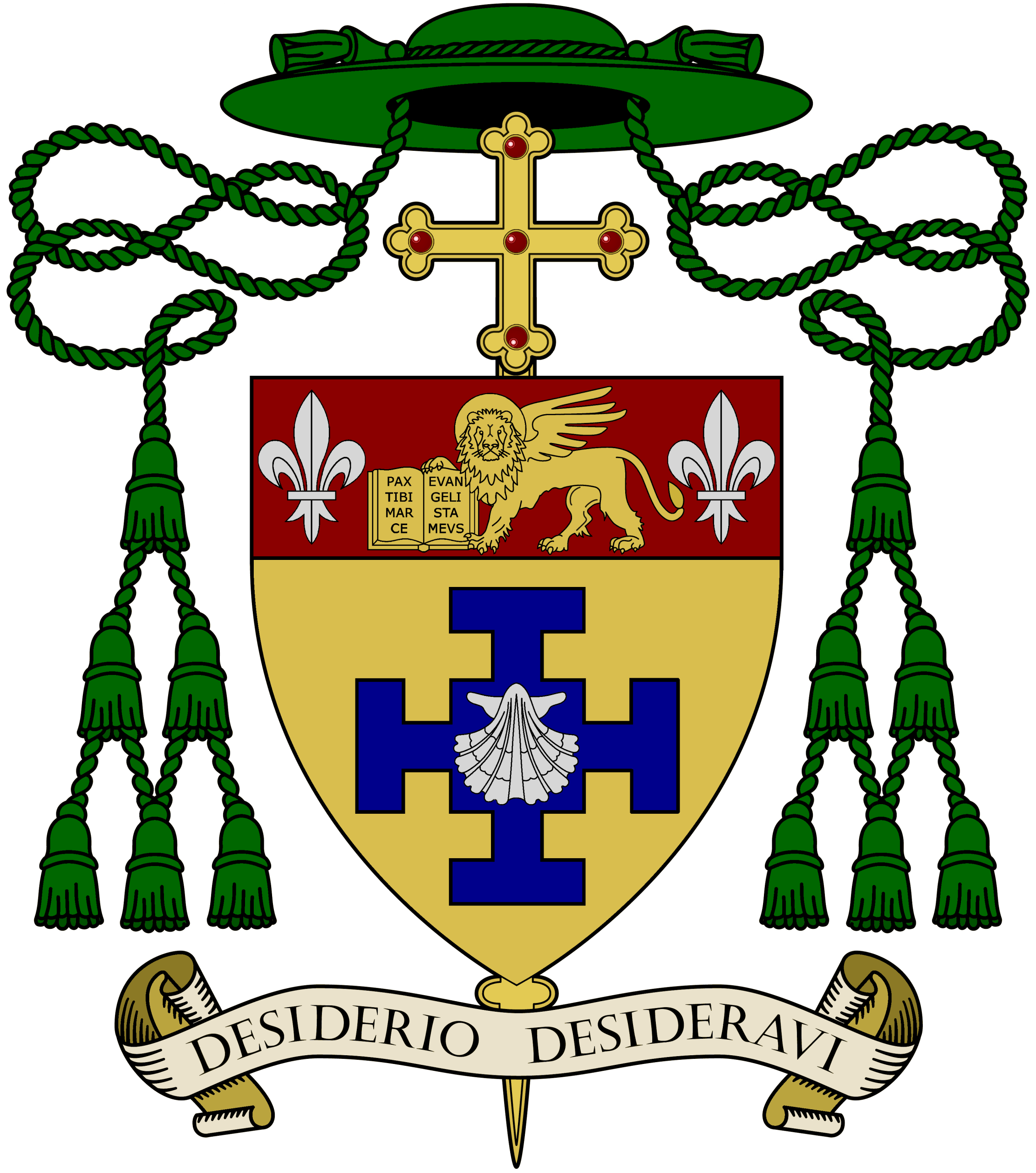In the end, the visit of the relics of St Thérèse to York Minster was almost unbearably moving. I talk as one who went on the Friday morning and listened to the service for schoolchildren and witnessed the procession of the relics down the nave to the great West Door followed by hundreds of children of all ages. As the casket containing the relics processed through the West Door and out into the open air, spontaneous applause broke out and cheering too. Several people were in tears or near to tears. The emotional atmosphere was physical. As we went out into the open air the applause grew even louder and many people waved and fluttered handkerchiefs as though we had communally resolved that we were saying goodbye to a friend, albeit one who had stayed with us only some sixteen hours.
I felt I had touched saintliness that morning and had felt the power of the Spirit. Enough to make me quake. It was powerful. Yes! It was powerful. The psalms have several descriptions of God’s theophanies. It wasn’t quite like that. The foundations didn’t shake. The mountains didn’t melt like wax. But I got a glimpse of what that might be like. And I got a glimpse of a life that can be lived that has no care whatsoever for the things of this world, of the things that most people hold dear and strive for. Suddenly the shopping malls of York seemed in another world. All the frantic hubbub and frantic effort of economic activity, of getting on, of presenting the right image, suddenly all this seemed worthless, beside the value, the value … of what?
To answer that I go back to earlier in the day. Arriving at the Minster some two hours earlier the immediate impression had been of the atmosphere of devotion in the Lady Chapel with masses of votary candles around the casket. A further impression had been of surprise at the number of people in this supposedly secular age. And something even more moving ñ the participation of clergy from both the Anglican and Catholic traditions and maybe from others too. This first became visible of all in the office of healing in which many different members of the clergy laid hands.
And then later in the children’s service. There was a powerful feeling that we were all brothers and sisters in Christ. A marvellous feeling of relief, as discord and suspicion was put aside. And more especially moving in the city in which Margaret Clitherow laid down her life.
And from somewhere out of this, the message of St Thérèse became clearer. The realisation that God loves us and loves us despite our weaknesses, imperfections and sins. To reach out to him is to be accepted. In this love all enmity and strife dissolves.
So what? Out of the realisation that we are loved by God, out of all the emotion, what remains? Emotion dies away. The feeling of being touched by the spirit fades and is forgotten amid the cares of life. But what I learnt from Thérèse is that amid all these cares I can still love God. I can love him in a thousand seemingly insignificant ways, by loving my neighbour, by doing my work as if for Christ, by performing the most hum-drum tasks in a spirit of love.
I learnt too that Thérèse attempted to see everyone as though seeing them through the eyes of Christ. Even if I think I love Christ when attending the liturgy, when I go out into the outside world, my life is full of cares, unexpected events, unlooked-for demands, criticisms and misunderstandings in my relations with others. This continually interferes with my attempts to live the gospel in my daily life, and makes too challenging the exhortation at the end of mass ‘to go in peace to love and serve the Lord’.
So I resolved that I too should try to look at others as though with the eyes of Christ, to use this as a weapon in the constant struggle to love against all odds, and in the face of all difficulties and temptations. So, for example, the next time I was unfairly criticised for something at work, or misunderstood, I would not succumb to irritation, but would smile and say, ‘OK! Fine! Just as you say!’ If I was overloaded with work, I would not complain, but make positive suggestions on how to get things done.
I learnt finally about the power of prayer. Thérèse prayed constantly, not only through the liturgy and devotions, which she often found difficult, but by constantly holding a free and natural conversation with Christ throughout her day, as if with a friend and a sure help. This was the powerhouse that kept her on her path. She was not often carried along on a wave of emotion. For long periods her spiritual journey was a struggle. At times she doubted her vocation. She experienced frustrations and irritations. In her final illness she not only faced intense physical pain, but a devastating dark night of the soul in which she doubted God’s existence. Her solution was to struggle on trusting and hoping in Jesus against staggering odds and counter-evidence.
At a personal level I have not felt the need to follow up this visit with grand schemes and initiatives. Instead I need solemnly to ask God’s help to follow her way of love in the smallest things ñ a resolute determination to love God and to act at all times as He would wish, with His help to follow the exhortation of St Paul to live up to my calling, being always humble, gentle and patient, forbearing and charitable. And to recall that, as Paul goes on to say in the same passage (Eph 4), ‘There is one body, one spirit, one Lord, one faith, one baptism’ ñ stunningly brought home by the ecumenical spirit that morning in York Minster.
Chris Heywood
